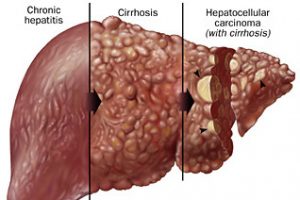NEWS AND UPDATES
Knowledge on hepatitis B: Effective shield against the disease

Like any other diseases, understanding hepatitis B – its nature, symptom, transmission, prevention and management – is the best shield to prevent and manage the disease, said Dr. Gerald Belimac, program manager of the Department of Health’s National AIDS STI Prevention and Control Program.
Hepatitis B is a serious public health issue. In a phone interview, Dr. Belimac said, “Hepatitis B is 100 times more contagious than the AIDS virus. It is also the most common cause of liver infection leading to liver cancer – the principal cause of cancer death in many parts of Africa, Asia and the Pacific Region.â€
Hepatitis B has two major stages of infection, the acute infection which occurs during the first six months of encounter with the disease and the chronic infection or severe hepatitis B infection.
Acute infection is bearable to healthy adults. According to the Hepatitis B Foundation, 90% of healthy adults are able to develop antibodies against HBV and become immuned to the disease during the acute hepatitis B infection stage. Unfortunately, this is not true for babies and young children. About 90% of babies and 50% of young children become chronic hepatitis B carriers.
Persons with chronic hepatitis B infection have greater risk of developing serious liver disease. According to the Hepatitis B Foundation, the disease is very dangerous because it shows limited or no symptoms. The person with chronic hepatitis B infection can even live for decades without having any symptoms, while the virus can quietly and continuously attack the liver which may lead to cirrhosis and eventually liver cancer.
Hepatitis B can be transmitted through contact with infected bodily fluids such as blood transfusion, unprotected sex, use of non-sterile needles, sharing of inanimate objects such as razors, toothbrushes, nail-clippers and earrings. It can also be transmitted through prenatal exposure to an infected mother, body piercing, tattooing and acupuncture.
Though everyone is at risk of getting hepatitis B, experts have identified individuals who have higher risks because of their job and life choices. These include healthcare workers, emergency personnel, residents and staff of jails and group homes, illicit drug users, people with multiple sex partners, people who get tattoos or body piercing and people with close contact to infected family members.
Certain medical conditions such as people with kidney disease or those who need kidney dialysis, people who need blood for medical reasons, and people diagnosed with sexually transmitted disease also have higher risks of getting infected with hepatitis B.
“At the moment, there is no complete cure for hepatitis B. Though there are treatments to reduce the progression of liver disease by slowing down the virus, there is no guarantee for the total removal of the virus,†said Dr. Belimac.
Vaccination is necessary to protect everyone, especially infants and children. However, vaccines are not for infected patients. They are designed to protect individuals not yet infected with the disease by helping the body develop antibodies against hepatitis B.
You may also like:
 PCHRD advocates hepatitis B prevention’s “Code Yellow†“ |
 Prevent Hepatitis B: Consult your doctor today |
 Liver care: A healthy lifestyle for Hepatitis B patients |




